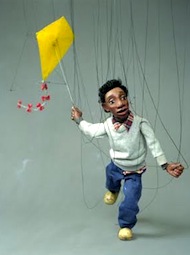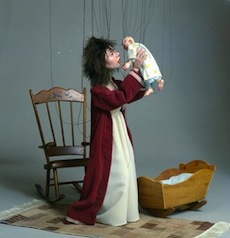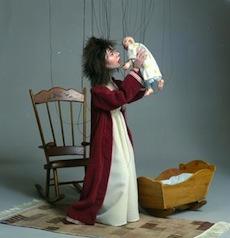
Every artist sets out to create — to create beauty, create emotion, create magic. Rarely does an artist have the opportunity and ability to create life. For Joseph Cashore, creation has been a part of his daily life for decades.
The Cashore Marionettes will come to life at Cal Performances on Oct. 23. They are in no way a simple puppet show. “The character is alive on stage,” the artist asserts. “That really is critical to the audience becoming emotionally invested in what the character is doing. If they can believe in the character, believe in what the character is doing, than they can emotionally go with the character wherever it’s going.”
The production at Wheeler Auditorium, called Simple Gifts, was created to show scenes from everyday life. Joseph Cashore gathered his best works for this performance to showcase the emotions captured by marionettes. In his lifetime Cashore has created over 100 marionettes, but is bringing his most compelling pieces to Berkeley.
The creative process for the marionettes is simple in its approach, it seems, though the level of details is nearly overwhelming. Each character comes from a sketch of everyday life. As he constructs each marionette, Cashore focuses on the primary emotion of the character and the physical motion needed to convey that emotion.
“What kind of position would they need to get the body into to communicate the main idea of the piece?” he asks himself for every marionette. He then creates a storyboard, followed by the marionette itself, and finally selects the music to narrate the piece. For Simple Gifts, the pieces are “narrated” by true masters of emotions — Vivaldi, R. Strauss, Beethoven, and Copland (whose composition Simple Gifts is widely known and loved).

The process of bringing the marionettes to life has spanned the course of Cashore’s career. At the start of his career, he used the standard “airplane” control for the marionettes. “I quickly found out to get the quality of movement I was interested in I had to develop my own system of control.” He has continued to perfect this over the years as he develops controls for each new marionette. “Each of the controls is different. Each one is particular to its character.” Cashore shows the importance of this on his website, with a video detailing the process of creating each marionette and its controls.
The years of discipline and study can be seen with each character that appears to step on stage. The scenes explore all the emotions of life, Cashore promises. “It’s an interesting mix of pieces — some of them are tender and highly focused, and some of them have a lot of laughter. It’s like a roller coaster ride.”

